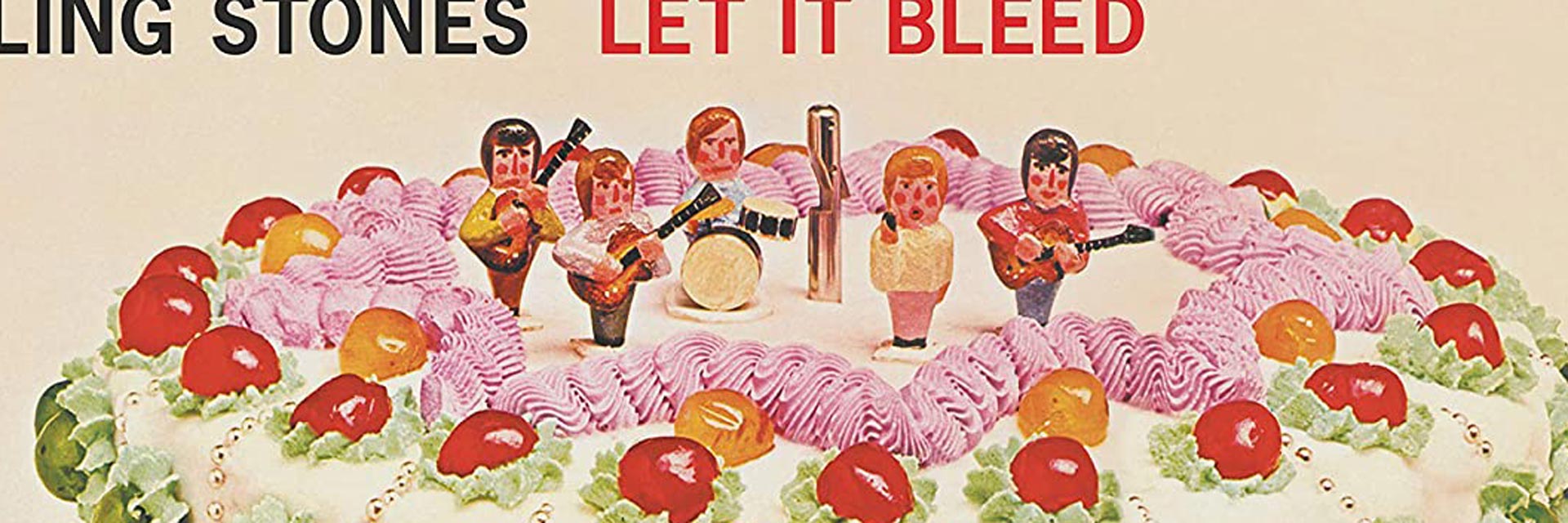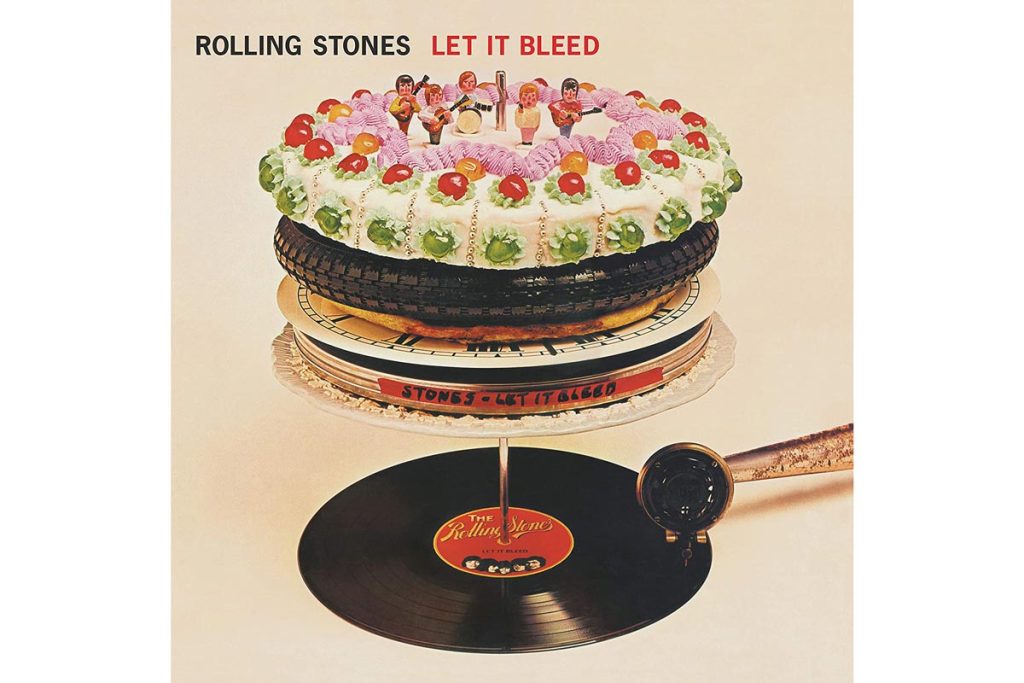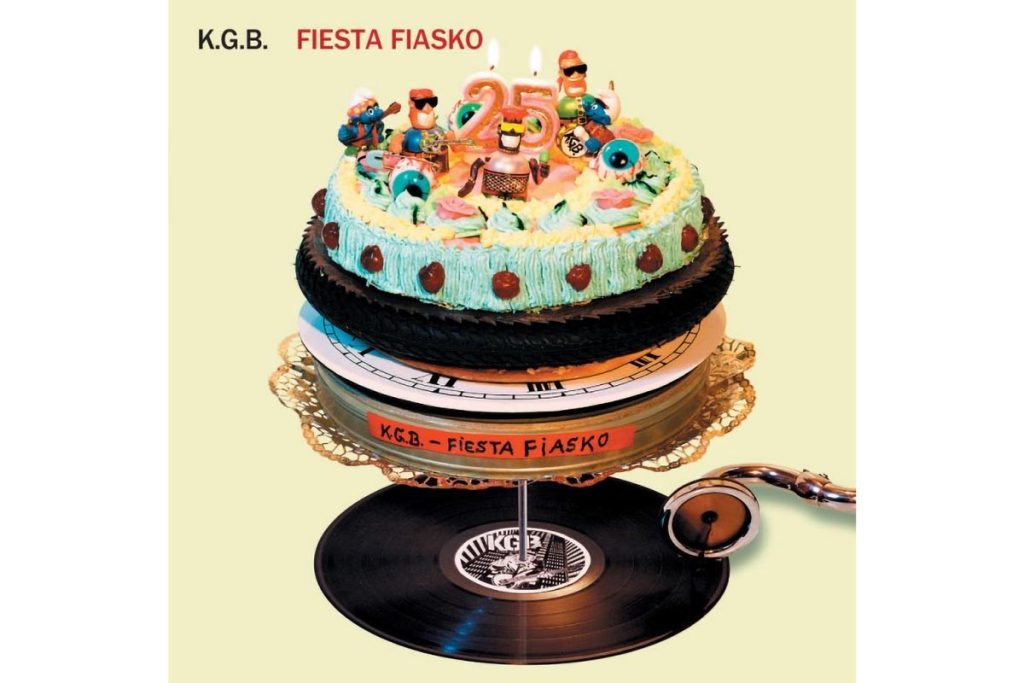The Stones had an incredibly productive period in 1969: ideas were flowing continuously – “songs were coming.”
Mick Jagger and Keith Richards were almost always together, creatively inspiring each other. Richards recounts that Jagger only needed a keyword to start fantasizing: “You just let him go and then take a few words from it and turn it into a song.” Jagger’s vocals are sometimes buried deep in the gritty, raw sound mix, and he naturally mumbles in his mocking, sleepy way. Richards says, “Many people complain that they can’t hear his voice properly. If the words can be understood, it’s good, and if not, it’s also good because they can mean very different things anyway.” The message got across, though. “Let It Bleed” is about violence, sex, and blood. “It was a very violent time,” says Jagger. The Vietnam War, racial unrest in the USA, fantasies of murder. Maybe it was a good thing that some lyrics weren’t so clear.
Some tracks became quite famous. “Gimme Shelter,” for example, was actually an apocalyptic song, a cry for help from murder, war, and storms – with the ecstatic Merry Clayton as a guest singer. Or the title track “Let It Bleed” with its crude, ambiguous fantasies of sex and drugs. Or the closing “You Can’t Always Get What You Want” with its half-ironic realism. The Trump campaign brought attention to the song again in 2016. The idea to incorporate choir singing here was inspired by the Beatles’ hit “Hey Jude.” Since there was no gospel choir available, they curiously hired the renowned London Bach Choir for it. The choir later distanced itself from the album, though, due to another song, “Live With Me.” The Stones occasionally glanced over at the Beatles. The words “let it bleed” don’t even appear in the title track – they were simply a response to “Let It Be,” a song and album that were only announced and not yet released at the time.
There was no single release. The Stones’ single hit in 1969 was “Honky Tonk Women,” which didn’t appear on any regular album. However, the song appears on “Let It Bleed” in a modified version called “Country Honk.” Country blues was indeed the band’s primary inspiration at the time. Violence, sex, drugs, frustration, Satan, and the blues – for Jagger, they somehow went together. There’s even a genuine blues cover on the album, “Love In Vain,” a recently discovered Robert Johnson song – it serves as the quiet moment on the A-side. Its counterpart on the B-side is “You Got The Silver,” unusually sung by Keith Richards, the blues guitar specialist. Jagger was out of the country at the time, so Richards took over his role.
In fact, the two of them could have made the album entirely on their own. Richards plays almost all the guitar parts, including counter-melodies and other overdubs. They had just ousted their former band leader Brian Jones from the band – they were just getting to know his replacement, Mick Taylor. The album contains the last Stones recordings with Jones and the first with Taylor. Occasionally, they brought in a keyboardist or a horn player for the songs. Saxophonist Bobby Keys, who would be part of the touring band for many years, plays on a Stones record for the first time in “Live With Me.”
Let It Bleed is considered one of the best rock albums of 1969 – and was one of the most successful: number one in the UK, number three in the USA. The idea for the surreal album cover came about when the working title of the record was still “Automatic Changer.” On the record changer rests not a record, but a cake, and its inner layers form a bicycle tire, a pizza and a clock face. The pie itself, by the way, is said to have been the work of Delia Smith, who later made a career as a cookbook author and TV chef. (In 1969, she was still working in the field of “food photography.”) The Swabian punk band K.G.B. simply recreated the cake construction for their album Fiesta Fiasco – including little figures on top. Actually, only the anniversary candles and the number “25” are new. That’s how old the band was back then.
K.G.B. (not to be confused with the US band of the same name from the seventies) were founded in 1980 in Tübingen, the venerable university town where Walter Jens and Ernst Bloch once taught. Perhaps this explains a little why Hannes Koerber, the band leader and singer of K.G.B., attaches so much importance to good (German) song lyrics and even has the lyrics printed in the booklet. (Koerber has also been included in a poetry anthology before.) The 14 songs are precisely arranged, go at a high tempo, mix chanting with catchy choruses – it’s a mature noble punk rock recipe. Koerber’s ever-changing band has easily outlived its namesake – the Soviet secret service. That’s why the abbreviation K.G.B. was always interpreted differently by the band, for example as „Kein Grund zur Beruhigung“ (No reason to calm down) „Korrupt, gierig, bestechlich“ (Corrupt, greedy, bribable) or „Kerngesunde Biertrinker“ (Beer drinkers in great health) In the late 1980s, K.G.B. even went on a U.S. tour. But most of the time their songs were just „zu schade / für die Hitparade“ (Too precious for the hit parade).
Rolling Stones: Let It Bleed (ABKCO 8585-2)
K.G.B.: Fiesta Fiasko (ZYX 20720-2)



